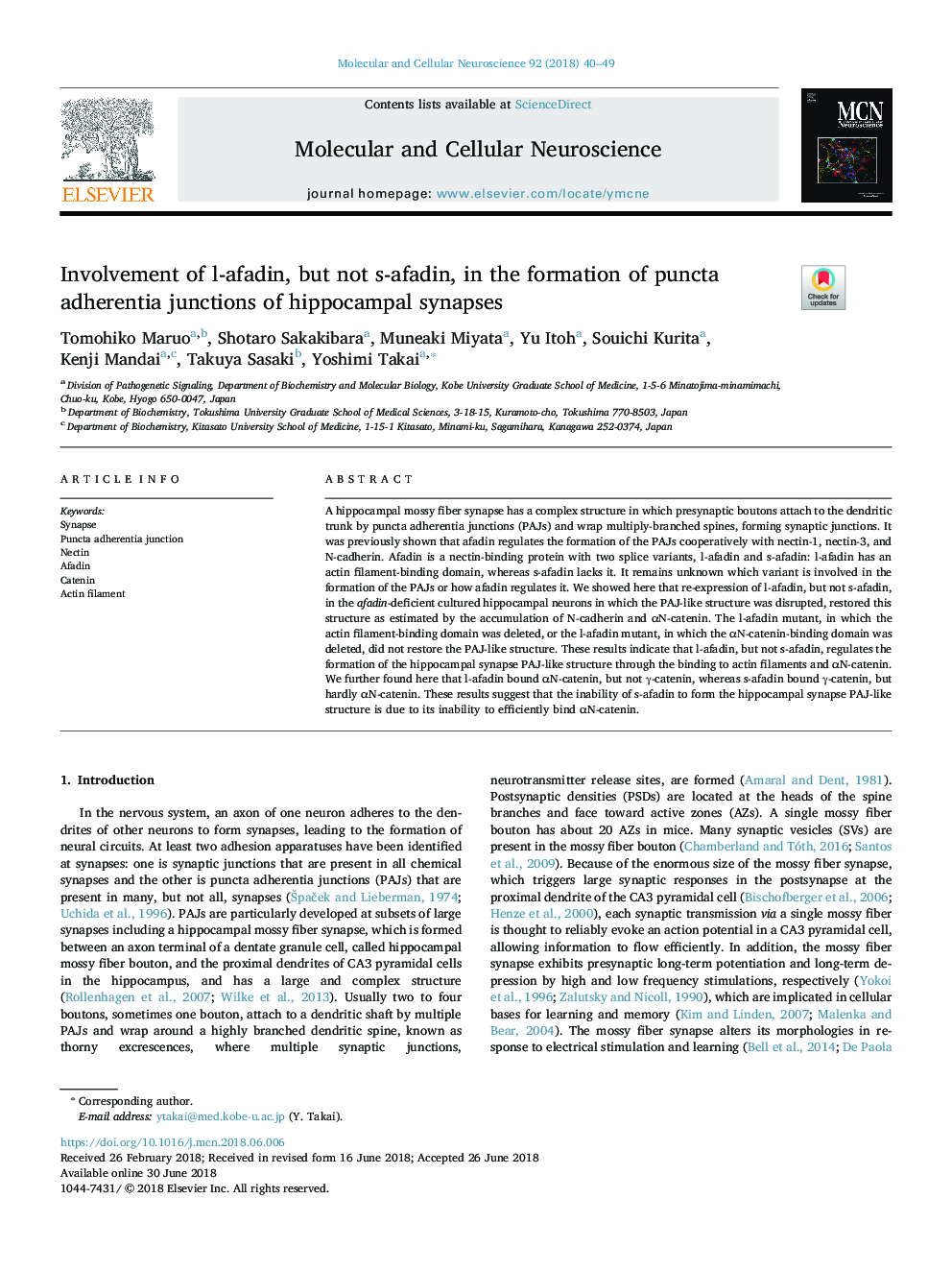| Article ID | Journal | Published Year | Pages | File Type |
|---|---|---|---|---|
| 8478337 | Molecular and Cellular Neuroscience | 2018 | 10 Pages |
Abstract
A hippocampal mossy fiber synapse has a complex structure in which presynaptic boutons attach to the dendritic trunk by puncta adherentia junctions (PAJs) and wrap multiply-branched spines, forming synaptic junctions. It was previously shown that afadin regulates the formation of the PAJs cooperatively with nectin-1, nectin-3, and N-cadherin. Afadin is a nectin-binding protein with two splice variants, l-afadin and s-afadin: l-afadin has an actin filament-binding domain, whereas s-afadin lacks it. It remains unknown which variant is involved in the formation of the PAJs or how afadin regulates it. We showed here that re-expression of l-afadin, but not s-afadin, in the afadin-deficient cultured hippocampal neurons in which the PAJ-like structure was disrupted, restored this structure as estimated by the accumulation of N-cadherin and αÎ-catenin. The l-afadin mutant, in which the actin filament-binding domain was deleted, or the l-afadin mutant, in which the αÎ-catenin-binding domain was deleted, did not restore the PAJ-like structure. These results indicate that l-afadin, but not s-afadin, regulates the formation of the hippocampal synapse PAJ-like structure through the binding to actin filaments and αN-catenin. We further found here that l-afadin bound αN-catenin, but not γ-catenin, whereas s-afadin bound γ-catenin, but hardly αN-catenin. These results suggest that the inability of s-afadin to form the hippocampal synapse PAJ-like structure is due to its inability to efficiently bind αN-catenin.
Related Topics
Life Sciences
Biochemistry, Genetics and Molecular Biology
Cell Biology
Authors
Tomohiko Maruo, Shotaro Sakakibara, Muneaki Miyata, Yu Itoh, Souichi Kurita, Kenji Mandai, Takuya Sasaki, Yoshimi Takai,
